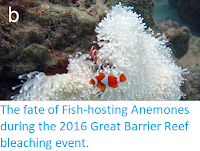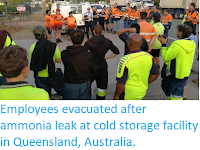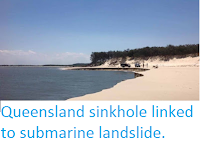Nine people have now been confirmed dead after Cyclone Gabrielle swept across the east coast of North Island, New Zealand, on Sunday 112 February 2023. About five thousand more people are missing following the event, and while it is thought that most have simply been cut off in remote areas by the damage that the storm has done to the country's communications network, ten missing people are considered to be at high risk. A week after the event about 62 000 households are still without electricity, 40 000 of them in the Hawkes Bay area, with about 2000 people still staying in evacuation centres.
The storm brought the second highest rainfall ever recorded in a single day in New Zealand, 348 mm in 24 hours at Whangārei in the Northland Region. as well as sealevels 30-40 cm above normal, winds gusting at up to 155 km per hour, and waves as high as 11 m. The storm brought widespread flooding, with numerous landslides sweeping away roads and buildings. Landslides are a common problem after severe weather events, as excess pore water pressure can overcome cohesion in soil and sediments, allowing them to flow like liquids. Approximately 90% of all landslides are caused by heavy rainfall. The flooding was made worse due to a rainstorm which hit North Island at the end of January, which has already left the ground waterlogged and drainage systems at capacity across much of the affected area, with between 10 and 20% of the floodwaters unleashed by Gabrielle thought to have been linked to this earlier event.
Tropical storms, called Cyclones in the Indian Ocean and South Pacific, are caused by solar energy heating the air above the oceans, which causes the air to rise leading to an inrush of air. If this happens over a large enough area the inrushing air will start to circulate, as the rotation of the Earth causes the winds closer to the equator to move eastwards compared to those further away (the Coriolis Effect). This leads to tropical storms rotating clockwise in the southern hemisphere and anticlockwise in the northern hemisphere. These storms tend to grow in strength as they move across the ocean and lose it as they pass over land (this is not completely true: many tropical storms peter out without reaching land due to wider atmospheric patterns), since the land tends to absorb solar energy while the sea reflects it..
Cyclone Gabrielle initially formed over the Coral Sea, to the east of Queensland, where the Australian Bureau of Meteorology recorded sea surface temperatures of 30°C earlier this month, around 5°C hotter than the threshold generally assumed for the formation of tropical storms. This came amid high sea temperatures across the Western Pacific Warm Pool region driven by three consecutive years of La Niña conditions in the region, which has led to a huge build up of thermal energy in the southern Pacific, with temperatures 4°C above normal recorded 150 m below the surface.
The La Niña weather system is the opposite of the El Niño weather system, in which unusually cold surface temperatures spread across the equatorial Pacific from the upwelling zone on the South American coast. This traps warm water from the western Pacific, preventing it from spreading east and warming the central Pacific. This leads to lower evaporation over the (cooler) east Pacific, leading to low rainfall on the west coast of South America, and higher evaporation over the (warmer) west Pacific, leading to higher rainfall over East and Southeast Asia and northern Australia.
Despite the obvious danger of winds of this speed, which can physically blow people, and other large objects, away as well as damaging buildings and uprooting trees, the real danger from these storms comes from the flooding they bring. Each drop millibar drop in air-pressure leads to an approximate 1 cm rise in sea level, with big tropical storms capable of causing a storm surge of several meters. This is always accompanied by heavy rainfall, since warm air over the ocean leads to evaporation of sea water, which is then carried with the storm. These combined often lead to catastrophic flooding in areas hit by tropical storms.
See also...
Follow Sciency Thoughts on Facebook.
Follow Sciency Thoughts on Twitter.






























